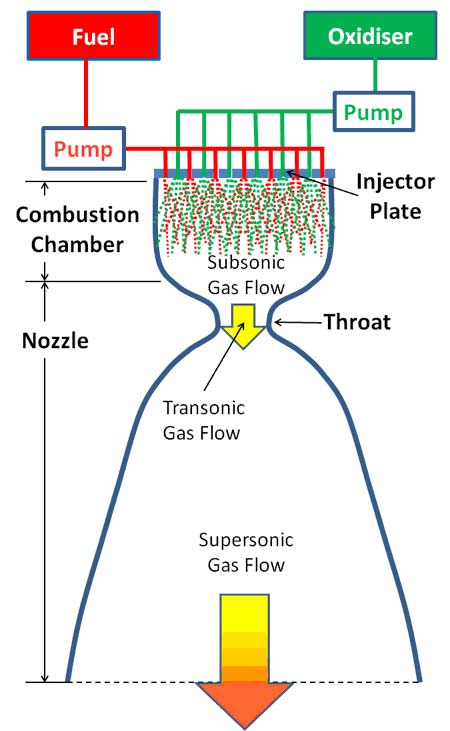combustion chamber

The combustion chamber of a liquid-fueled rocket shown in relation to other components.
A combustion chamber, also known as a firing chamber, is the chamber of a rocket engine in which the fuel and the oxidizer burn to produce high pressure gas expelled from the engine nozzle to provide thrust.
To begin with, the fuel and oxidizer pass separately through a complex manifold in which each component is broken down into smaller and smaller flow streams, in the same way that arteries in the body divide into increasingly small capillaries. Then the propellants are injected into the combustion chamber via the injector – a plate at the top of the chamber which takes the small flow streams and forces them through an atomizer. The purpose of the injector is to mix the fuel and oxidizer molecules as thoroughly and evenly as possible.
Once mixed, the fuel and oxidizer are ignited by the intense heat inside the chamber. To start the combustion, an ignition source (such as an electric spark) may be needed. Alternatively, some propellants are hypergolic – they spontaneously combust on contact – and do not need an ignition source.


